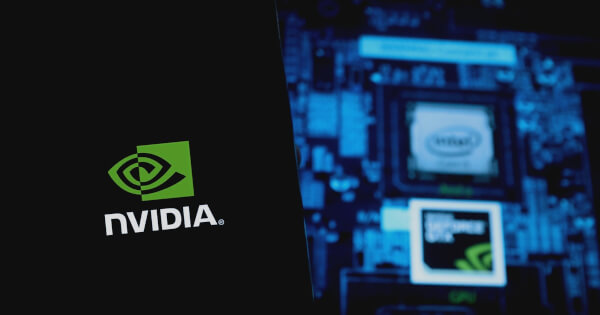3D Visualization Revolutionizes Future Chip Designs with NVIDIA and Ansys Collaboration – Blockchain.News
NVIDIA Omniverse and Modulus enable Ansys to accelerate 3D simulation workflows, paving the way for next-generation semiconductor systems.
In a groundbreaking development, NVIDIA Omniverse and Modulus are empowering Ansys to accelerate 3D simulation workflows, a key component in building next-generation semiconductor systems, according to the NVIDIA Blog.
Multi-die chips, known as three-dimensional integrated circuits (3D-ICs), represent a revolutionary step in semiconductor design. These chips are vertically stacked to create a compact structure that enhances performance without increasing power consumption. However, as chips become denser, they present more complex challenges in managing electromagnetic and thermal stresses. Advanced 3D multiphysics visualizations become essential to design and diagnostic processes to address these challenges.
At the Design Automation Conference, a global event showcasing the latest developments in chips and systems, Ansys demonstrated how it leverages NVIDIA technology to overcome these challenges. Ansys uses NVIDIA Omniverse, a platform of application programming interfaces, software development kits, and services, to enable 3D visualizations of simulation results. This platform powers visualizations of 3D-IC results from Ansys solvers, allowing engineers to evaluate phenomena like electromagnetic fields and temperature variations to optimize chips for faster processing, increased functionality, and improved reliability.
With Ansys Icepak on the NVIDIA Omniverse platform, engineers can simulate temperatures across a chip according to different power profiles and floor plans. Identifying chip hot-spots can lead to better chip designs and auxiliary cooling devices. However, these 3D-IC simulations are computationally intensive, limiting the number of simulations and design points users can explore.
Using NVIDIA Modulus, combined with novel techniques for handling arbitrary power patterns in the Ansys RedHawk-SC electrothermal data pipeline and model training framework, the Ansys R&D team is exploring the acceleration of simulation workflows with AI-based surrogate models. Modulus is an open-source AI framework for building, training, and fine-tuning physics-ML models at scale with a simple Python interface.
The NVIDIA Modulus Fourier neural operator (FNO) architecture can parameterize solutions for a distribution of partial differential equations. Ansys researchers created an AI surrogate model that efficiently predicts temperature profiles for any given power profile and a defined floor plan based on system parameters like heat transfer coefficient, thickness, and material properties. This model offers near real-time results at significantly reduced computational costs, allowing Ansys users to explore a wider design space for new chips.
Following a successful proof of concept, the Ansys team will explore the integration of such AI surrogate models for its next-generation RedHawk-SC platform using NVIDIA Modulus. As more surrogate models are developed, the team will also look to enhance model generality and accuracy through in-situ fine-tuning. This will enable RedHawk-SC users to benefit from faster simulation workflows, access to a broader design space, and the ability to refine models with their own data to foster innovation and safety in product development.
To see the joint demonstration of 3D-IC multiphysics visualization using NVIDIA Omniverse APIs, visit Ansys at the Design Automation Conference, running June 23-27, in San Francisco at booth 1308 or watch the presentation at the Exhibitor Forum.
Email us at [email protected]
Welcome to your premier source for the latest in AI, cryptocurrency, blockchain, and AI search tools—driving tomorrow’s innovations today.
Disclaimer: Blockchain.news provides content for informational purposes only. In no event shall blockchain.news be responsible for any direct, indirect, incidental, or consequential damages arising from the use of, or inability to use, the information provided. This includes, but is not limited to, any loss or damage resulting from decisions made based on the content. Readers should conduct their own research and consult professionals before making financial decisions.
